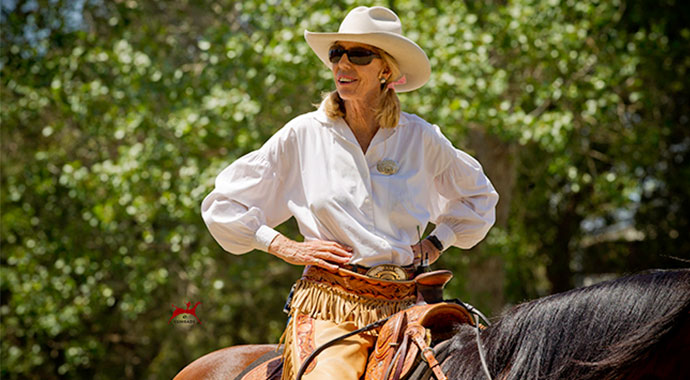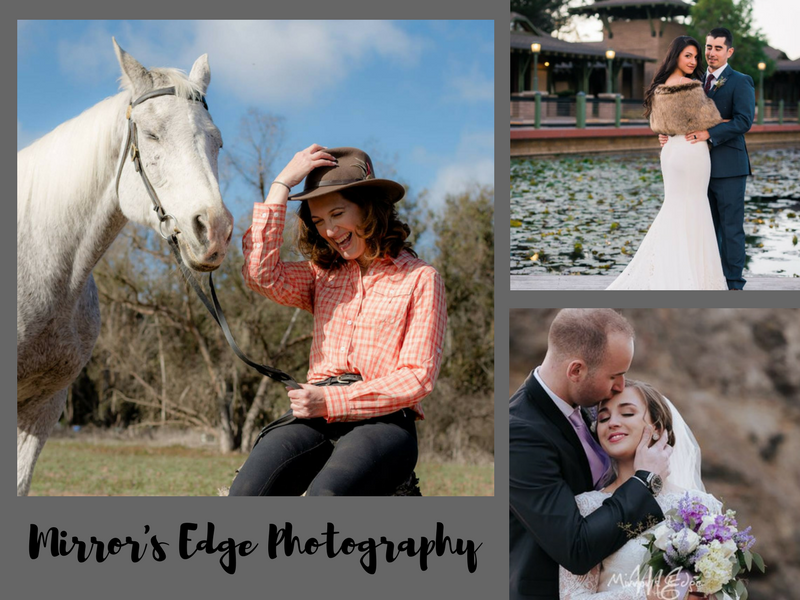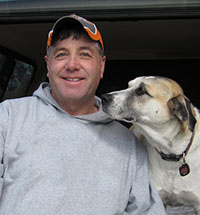Forward:
I’ve been a fan of Sheila Varian and the Varian Arabians for quite some time and my first visit to the ranch is where the beginnings of SLOHN came from. Katie and I got the chance to sit down with Sheila and talk about how she got started, her successes, and some of the things that make Varian Arabians unique. After our talk, we had the most amazing experience of just walking into a field of mares and foals. The three of us sat down together in the grass while the horses came up to see us. It was exactly the type of moment you dream about. The most amazing thing though, was to see Sheila with the horses. Even after 60 years in the business, she’s still a little girl with a horse full of wonder. She has the hope for the new horses to come and the sorrow for the great ones lost along the way. – Jake
“What I always say about Ronteza is that she took me by the hand.”
While Sheila Varian credits her mare, Ronteza, for taking her by the hand in those early years, Sheila has spent the last 60 years taking the Arabian Horse world by the hand in return.
“I was wild about horses as a little girl, born wild about horses. I convinced my father to get a horse to hunt on, and that was my first horse, a huge Morgan Percheron mare of 16 hands. I rode her everywhere.”
The root of her love for the Arabian breed wasn’t discovered in the pasture but on the pages of books. “The Walter Farley Black Stallion series really started it. There were a few Arabians around, and I loved them because they were beautiful and friendly, and they were active. Although I got really interested in the western influences because I live in this Vaquero land. At that time the Vaquero style was really strong, and during that time the best of everybody lived in San Luis Obispo, Santa Barbara, and Monterey County, and still do as a matter of fact. So I got involved in the western influence, but for me it was always Arabians.”

Sheila’s passion for the Arabian horse has had an influence on countless people. Yet her biggest influence was from a woman who owned a ranch in Lopez Canyon, Sid Spencer. “I rode all that country with her. She rode Morgans but she was really a horsewoman of the finest quality. She wasn’t a teacher, she wasn’t a showman, but she knew horses and she knew cattle. That’s where I learned about all of it to start off with.”
Sheila credits Tom Dorrance as another mentor, with his influence starting her on a new path that would forever alter her approach to training and horsemanship. Mentors such as these are readily found when there is a desire to learn, a desire that Sheila has maintained over the years.
“I don’t go anywhere without learning something new. I really like learning. I think there are some fabulous horsemen out there now. I really love listening to Jack Brainard who’s a 92 year old guy from Texas that is just a genius on horses. I listen and I’m very open to something new. I have always known when I was talking to someone who was really knowledgeable and never spent much time with those that weren’t. I did all the wrong things because that’s what you do when you’re learning, but most of the time if I had a Sid to help me or a Tom Dorrance, or a Ray Hunt, if those people made a comment I listened and I watched.”
Sheila never anticipated that her love of horses would cumulate into Varian Arabians…Sprawling acreage, and immaculate grounds housing some of the worlds most renowned Arabs.

“I just thought I would be a teacher, I had gone to college at Cal Poly and was teaching. We didn’t have this land so we had no idea this would ever happen.”
On Ronteza, Sheila Varian became the first woman, on the first Arabian, and the first amateur to win the Open Reined Cow Horse Championship at the Cow Palace in October of 1961 while she was a teacher in Arroyo Grande.
“You know I can’t say I was so confident, I just wasn’t close enough to a lot of people to have them tell me I couldn’t do it. I was not involved in the Horse Show circle or Stock Horse circle other than I knew who they were and I looked up to them but I was doing it on my own.”
“I never thought about riding in the amateur classes and I can’t even tell you why. I just wanted to ride with the good guys I guess. And I was teaching school at the time so I didn’t pal around with them. I just never worried about being a girl, I never felt like riding an Arabian was less than somebody else’s horse.
The Tom Dorrances, the Ray Hunts, Sid; they didn’t care what you rode it just had to be a good horse. So I was riding a good horse.
As it turns out riding a good horse would be the spark that started the Varian Arabian fire. “My parents were supportive, so it was very natural when we got my first two mares, Farlotta and Ronteza, that we began to study pedigrees because it was interesting to us. After I won the Cow Palace people just assumed I was this little genius which obviously I wasn’t. I had ridden a lot of horses by then, and I had these two great ones, just superstars, they could do everything. So I took a few other horses in but they weren’t the same at all. Then it entered our minds that maybe what we had better do is breed our own. Because I was used to it now, I wanted to ride these really good horses, not just average horses. So that’s when we started breeding.”

“Varian Arabians is what it is because I have been so conscientious that the horses had to be well made, have good conformation, and trainable minds. If they were difficult to train, no matter how nice they were I moved them out. I didn’t keep them because I wanted to ride, and if it was hard to ride why would I keep it? No matter how pretty it was. So through the years we’ve just kept adding beauty to that quality of usefulness, to the desire to be ridden, and be well mannered.”
In keeping with Tom Dorrance’s soft approach, Sheila takes pride in the fact that you will never see a horse being spanked or jerked around on her ranch. “Like a really bright kid these horses have had very good instruction and it has been consistent so they are very comfortable with where they are and who they are. They aren’t worried about getting in trouble, they are already secure in that they don’t walk through a door ahead of you unless you point them in, that they don’t pull back because they’ve learned to come to you instead of running away. All my staff is educated in the manner that I want them to work the horses so it’s been done from the time their little until they leave here.”
I like finishing a horse. We follow the vaquero style a lot but certainly we have refined it and we have made horses more supple, more comfortable.
There is enjoyment in seeing the progression a young horse makes, but the art of horsemanship is defined by the finishing of a horse. This is the aspect of training that Sheila is the most fond of. “I like finishing a horse. We follow the vaquero style a lot but certainly we have refined it and we have made horses more supple, more comfortable. I’m really into making a horse comfortable, and not forcing anything. I’m not having to show hard anymore which gives you great freedom to take your time and do it well, in a way that makes you feel like you’re doing it really right. Learning how to fill gaps in a horse’s training with skills is a lot more enjoyable than trying to force that horse to step to a level that in fact he can’t step to because you don’t know how to get him there.”

Sheila Varian has put in the time to remedy any negative impressions the public has had in regard to Arabians in the past as well. “I ride my horses out and they are beautiful and well-mannered and people notice that. There were a lot of negative impressions about Arabian horses because the best of the Arabian horses were more or less going to exclusively Arabian Horse Shows. The lesser quality were being disseminated out there to all the people who just wanted a horse. So there were a lot of not very good ones, but there are huge numbers of great ones that people who haven’t gone to an Arabian show don’t know about. Of all the breeds, the Arabian horse covers the most disciplines. We have cutting horses, reining horses, hunters, jumpers, driving horses, english horses, western horses, parade horses, trail horses, side saddle horses…They can do everything.”
Varian Arabians goes back to a Polish ancestry in the beginning. Sheila’s first mares were both by imported Polish stallions that General Patton sent over here when they were rescuing the Lipizzaner’s at the time that WWII was just ending. “They sent those horses to the remount station at Kellogs, and both my mares were sired by those two stallions. The Poles were very strong in the fact that all their horses went to the racetrack, that they all had to be really useful, they had to have a good mind and be sound, giving them a very strong breeding program. Now we have what we call Polish Arabians, Egyptian Arabians, Spanish Arabians, and then there’s Varian Arabians. Our horses have their own look and people now refer to them as a type.”
“Egyptian right now is very popular although they haven’t ever been the useful horses that mine have been. It’s interesting that I’ve recently had stud farms in the Middle East coming here, interested in our horses, because they are now wanting to put this more useful horse together with theirs.”

With the shift from rural to urban, the horse regardless of the breed has had some difficulty. Fewer people have the privilege of room to own a horse or land to ride on. “There are large numbers of people that want to ride but they often start in their 40’s, 50’s, and 60’s rather than at 10, 11, 12, like we did. As far as the Arabian world goes, I’ve seen a lot of people that love the Arabians for all the same reason I love them. I think our association hasn’t been very imaginative in opening new ways of doing things, so then we do. We put on a “Hands-On Clinic” and it filled up in a week in a half. We still have room for auditors but as far as participants that filled right up. We did it last year for the first time and it was a huge success.”
This success is not limited to a single event, but in the legacy of Varian Arabians as a whole; a legacy of intentionality that breeds excellence. This Cowgirl Hall of Famer doesn’t see it as her legacy alone.
“Varian Arabians just grew and the people that came here have had an influence. I mean, Angela Alvarez has had an influence on this ranch. The beautiful roses are Meri’s, the gate down there is Bay el Bey’s…So much of this ranch is the people and horses that have worked here. They have been very involved in making it beautiful and a place that is good to work. And when the economy went bad, it was a struggle but we didn’t let any people off. We kept all the staff, we really were bare bones but we kept our staff.
You know I’m going to do what I do ‘til I drop over…And then Angela will probably keep some part of it going, I think Varian Arabians has been here a long time and I hope that it will continue. The quality of our horses has continually stepped up; we have never stayed level and that’s a lot of the joy of it. We’ve always gotten better at what we do. I think as long as you are growing and improving and getting better, the interest stays there. I think it’s when you either get tired, or bored, or broke and that you give it up. But we’ve managed to keep it going although the ranch has no other income, which not very many ranches can claim. And it’s not all because of me; this is a ranch that everybody has had a part of.“
And it’s not all because of me; this is a ranch that everybody has had a part of.




